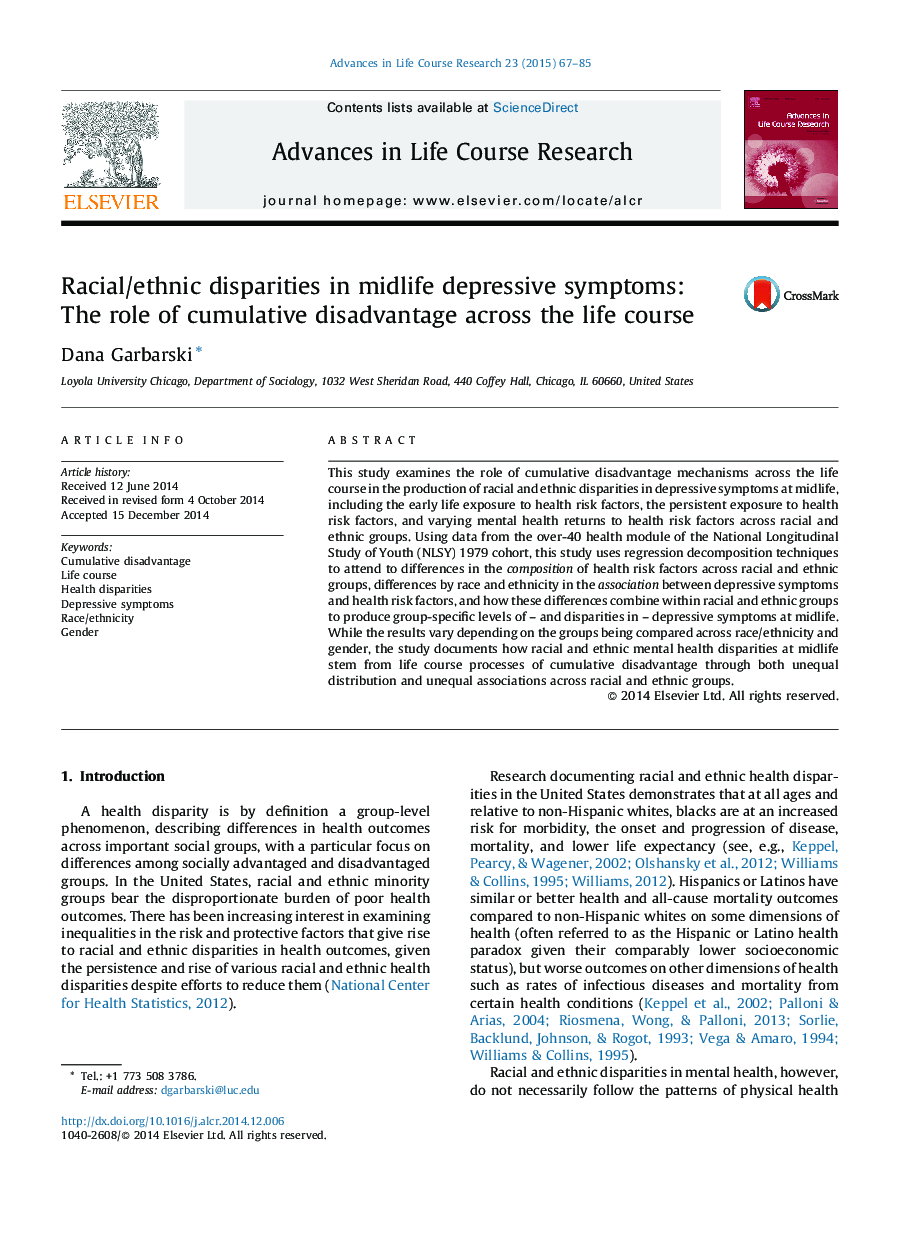| Article ID | Journal | Published Year | Pages | File Type |
|---|---|---|---|---|
| 312972 | Advances in Life Course Research | 2015 | 19 Pages |
•This study links cumulative disadvantage to racial/ethnic disparities in midlife depressive symptoms.•There are group differences in the composition of early life and persistent exposure to health risk factors.•There are also varying mental health returns to health risk factors across race/ethnicity.•Levels of depressive symptoms observed at midlife stem from different processes of cumulative disadvantage.
This study examines the role of cumulative disadvantage mechanisms across the life course in the production of racial and ethnic disparities in depressive symptoms at midlife, including the early life exposure to health risk factors, the persistent exposure to health risk factors, and varying mental health returns to health risk factors across racial and ethnic groups. Using data from the over-40 health module of the National Longitudinal Study of Youth (NLSY) 1979 cohort, this study uses regression decomposition techniques to attend to differences in the composition of health risk factors across racial and ethnic groups, differences by race and ethnicity in the association between depressive symptoms and health risk factors, and how these differences combine within racial and ethnic groups to produce group-specific levels of – and disparities in – depressive symptoms at midlife. While the results vary depending on the groups being compared across race/ethnicity and gender, the study documents how racial and ethnic mental health disparities at midlife stem from life course processes of cumulative disadvantage through both unequal distribution and unequal associations across racial and ethnic groups.
